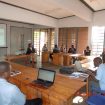Publication: September 2023
The general objective of a social registry in the social protection sector is to promote inclusion of poor and vulnerable populations that otherwise are excluded. That is why social registries are considered as inclusion systems. They provide a gateway for households to register and be considered for inclusion in one or more interventions without having the fear that they could be excluded.
Although not all countries have social registries, they have grown in the past 20 years mainly among middle- and low-income countries. However, most countries could not implement the suggested integrated and dynamic inclusion social registries. Whenever they were created, they developed their social registries as a self-contained database management system without any association to other programmes or administrative agencies, implying little to no interoperability with other systems.
Also, countries tended to operate registries with fixed lists of registrants and beneficiaries not allowing new households to register while the new census sweep happens. The typical approach is to conduct en-masse registrations or census sweeps every 4 to 8 years, data remains the same between census sweeps. Fiscal space constraints, low administrative capacities and lack of political will are the classic justifications to choose this approach and not the one recommended by donor agencies.
SOPROEN wants to suggest a feasible strategy to move social registries that are now static and self-contained to at least partially dynamic and integrated following a gradual and smooth process given the low administrative capacity and fiscal space constraints. Basically, the aim of this paper is to introduce a strategy to reduce the aging speed of the current data captured and stored from prior census sweeps and currently being used. and upcoming data to be captured and stored from the next census sweep of the social registry by cleaning data, partially updating household information, and adding new households using appropriate protocols and instruments.





